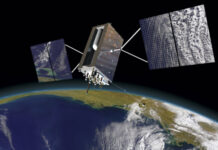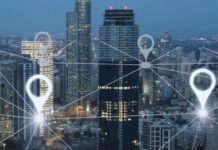By Christian Kotscher, CEO, MerlinTPS
Time was an afterthought for much of human history. Sure, the idea of knowing how long the sun would be out during the day existed in ancient Egypt when they used sundials to measure time. But keeping time didn’t truly take its more present-day form until the turn of the 19th century and the rise of the Industrial Revolution. Today, people hardly realize how dependent our everyday lives are on accurate and reliable time measurements.
The U.S. is hardly alone when it comes to its reliance on accurate and reliable time signals for critical infrastructure systems. Critical infrastructure systems operating in the financial, telecommunications, energy, healthcare and transportation sectors cannot function properly without accurate time signals, and timing system failures can have serious consequences, with the potential implications including economic loss, reduced safety and loss of human life. These systems’ primary time synchronization sources are signals broadcasted by GPS satellites, which has understandably led to concerns about our dependency on GPS timing.

A study from RTI International, published in 2019, assessed the value of GPS technology to the U.S. economy and examined what effect a 30-day outage would have – whether it’s due to a severe space weather event or a bad actor. The research group estimated that GPS has generated roughly $1.4 trillion in economic benefits for the U.S. alone since it was made available for civilian and commercial use in the 1980s. It added that most benefits have accrued in the last 10 years of the study – from 2007 to 2017 – following rapid gains in information technologies, miniaturization and commoditization of powerful devices and the availability of robust wireless services. The study period ended seven years ago, and the world of technology has only accelerated in growth, meaning that the economic value of GPS is probably nearing a few trillion dollars.
But that doesn’t mean we should unquestioningly trust that it will always work and that technological advancements will continue to power society forward. In fact, GPS is not immune to interference from phenomena such as solar flares or extreme weather. It can also be unreliable in densely populated urban areas and is susceptible to deliberate disruption through jamming, spoofing and cybersecurity threats – leaving critical infrastructure at risk. Even more recently, GPS vulnerabilities have been scrutinized, with spoofing and jamming interfering with commercial aviation. Throughout January, pilots reported a surge in GPS jamming in Europe, particularly in the Baltic region, amidst the ongoing conflict between Russia and Ukraine. There’s also been a recent uptick in cybersecurity threats impacting transportation and solar flares causing power grid outages.
In 2018, U.S. Senators Ted Cruz (R-Texas) and Ed Markey (D-Mass.) realized a potential crisis was looming. They introduced the bipartisan National Timing Resilience and Security Bill to Congress, which established a land-based, resilient and reliable alternative timing system to GPS satellites. Such technology is being developed with the goal that if GPS went down for some reason, the supplemental tools could maintain the function of the nation’s critical infrastructure.
Just a few weeks ago, we saw what sort of impact a cellular outage could have on society when AT&T’s T 0.00%↑ network was down for nearly twelve hours, leaving more than 70,000 customers without access to calling, texting, emergency services or even internet access. Though AT&T resolved the issue quickly, if similar disruptions occurred on a larger scale and persisted, significant problems could arise with potentially damaging outcomes.
Imagine if GPS went out suddenly. Both the New York Stock Exchange and NASDAQ, whose operations impact more than 4,000 publicly traded companies valuing more than $30 trillion, would cease to function properly due to their reliance on time synchronization for trading – putting the economy in peril. The power grid would be down, causing mass blackouts that alone could cause the loss of life. Mobile phones and 5G networks would be lost, severely impacting communications. If those three critical infrastructure sectors that rely on GPS for operating went out alone, it would have catastrophic consequences. That doesn’t consider sectors like aviation, supply chain, health care and, maybe most importantly, national security and defense.
This may seem like a doomsday scenario, but even Hollywood sees this as a very real threat. Netflix’s recent flick “Leave the World Behind” depicts a scenario where satellites go down and the immediate impact that would follow. With cell service, navigation, electricity and the internet all gone, the consequences are catastrophic. While it’s a dramatic depiction, it’s a scenario that could become a reality.
As more threats to GPS arise, the world inches closer to catastrophe. That’s why it’s more important now than ever for the government to get behind the National Timing Resilience and Security Bill proposed by Senators Cruz and Markey and invest in tools that will supplement GPS capabilities and protect our nation should there ever be the need. It’s better to have these backup systems in place before something terrible does happen and we’re left scrambling after the fact. In a worst-case scenario, supplemental GPS technology is in place, we never have to use it and doomsday never arrives.



























